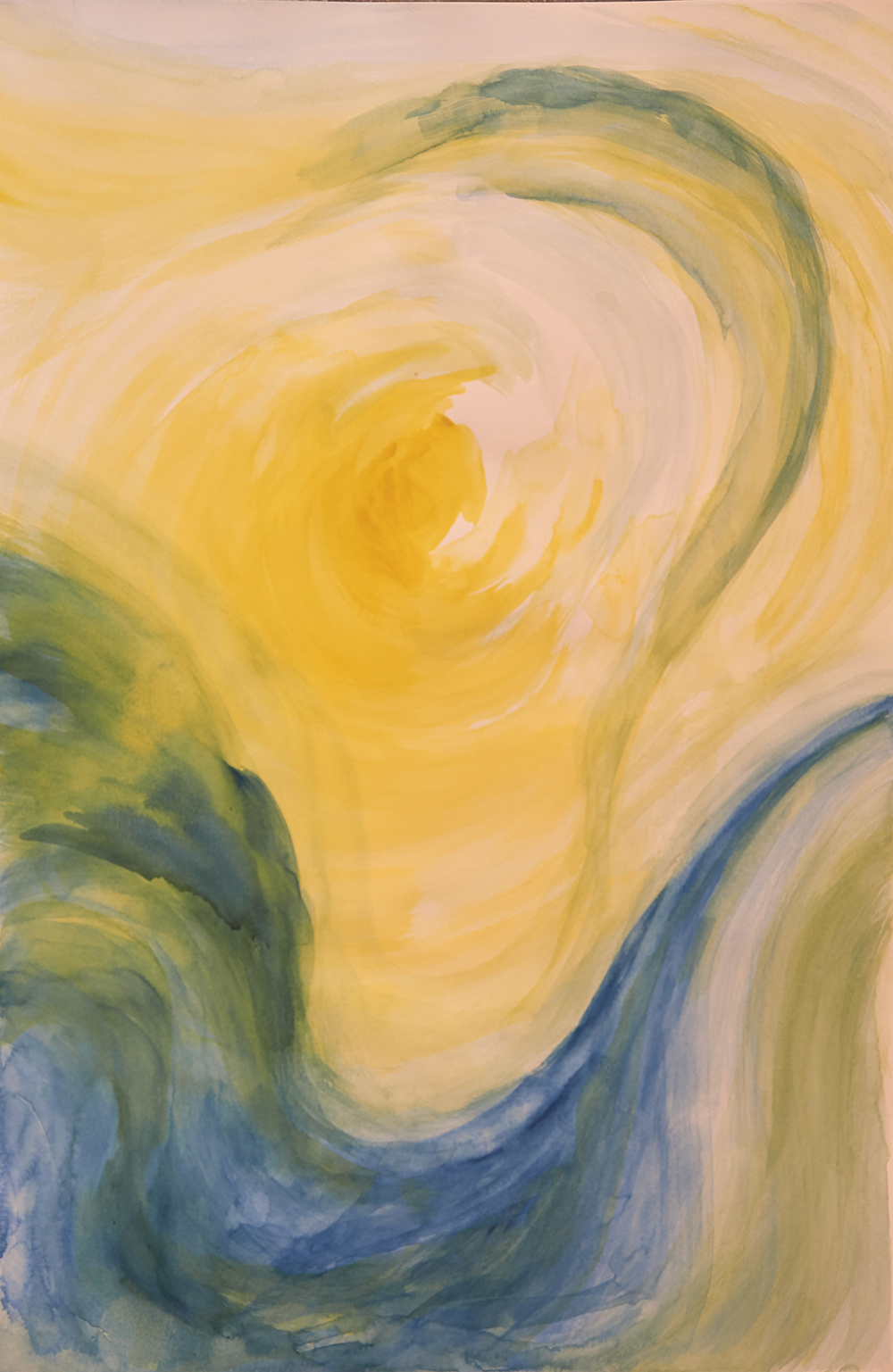gallery - Figurative arts

Vibration *
During my painting course that, in 2007, was inspired by the Tarot cards, Elisabetta Di Carlo asked us to contribute to our project by thinking, answering the specific questions. One of these questions, related to the topic corresponding to the card of Female Pope asked: How much do we distinguish the essential from the superfluous in the theories we use to understand the reality? Often, when we observe the reality or confront ourselves with it, we find ourselves in an ego-centered position, we identify ourselves with that complex of experiences, relations, ideas, perceptions and images that we call “me” but that aren’t “me” in reality. Perhaps we could say that all the theories we use to understand the reality are, more or less, sloppy attempts to grasp what is ungraspable by its nature by the egoic mind. I think that, in this way, the Female Pope card with its unflappability but also with its contradictory signs (see the colors of her gown, the fact that she is female pope, the lack of symmetry) indicates a need for silence, a silence from which a word of truth can come out. I think that these theories are a contribution (if they are perceived as those) to the development and refinement of our capacity to describe the reality and the relation which exists between me and the object of my observation. This is the only method I feel of following when trying to understand the things I see, hear, feel. When, in need to make experience, I give universal character to my experiences in the imaginative field, forming in this way a theory of the world, I risk forcing the reality, loosing something important, above all the warmth of empathy, or the things I can’t understand clearly but which, if missing, would debase into a simple given object of my attention. Just the fact that I take from so many sensations that touch my senses, something that I find meaningful, is a fruit of discriminations due to genetic heritage, the environment I grew up in or to which I still belong or simply to the particular evolutionary moment in which I find myself. This makes even more difficult to recognize what’s essential or transitory when choosing something that’s worthy of my attention. It’s only in the profound meditation repeated with discipline and regularity that I can assess my experiences and recognize what’s authentic or induced. In his book The Philosophy of Freedom, Steiner indicated and described accurately the way we get in touch with the world, even if in the later books he went over my current abilities of comprehension so I’ll retain a criteria of suspension of judgment. I can’t stop asking myself questions about the meaning of things and life but I believe only in things I live myself in my heart and in my thought. This is why the quote that Elisabetta Di Carlo took from the memories of Cézanne “When I paint, I breathe the virginity of the world” made a huge impression on me for its beauty, evocative capacity and the use of words belonging to different realities. Painting is a voluntary act of expression and description of the relationship between an individual and the world. Breathing is an involuntary act which is in relation with life. It’s still an expression of a relation between an individual and the world but it’s more physical, vital, direct. It’s also an emblematic image of an artistic inspiration (to take something from the spiritual worlds in a process as natural as it is to breathe). These two words, apparently so distant, meet to indicate a relation between a subject and object and Cézanne describes in this way his relation, as an inspirational, olfactory, aeriform relation. But what is he breathing from the world? Its virginity. Cézanne is observing a virgin world, so pure, intact, uncorrupted. But I think that by observing it, by painting it, he fertilizes it, gives it a new life, a life that comes from the passage through his eye, his world of thoughts and feeling and his hand, his entire body. Based on what’s been said previously, answering E’s question, can we talk about a virgin world, in observation of an artist? The ego of an artist is often hypertrophic and enlarged so how can an artist see a pure world? Maybe Cézanne wants to indicate that when he paints, when he’s inspired, he’s not in a normal state of conscience but in a real meditation. In this sense we can talk about virginity, because the observer in that moment is not ego-centered but a superior self, a purified self and so the world is virgin, originally new even though eternal. It happens to me too when I’m inspired but in my relation with world, I foresee more the presence of an aqueous element. So, rather than breathing, I feel I’m immerged into the see of images of an unpolluted, precious feeling (for the precariousness of those moments) which has the power to liquefy me, to melt me without losing me. I feel like I’m following a road in between the known and unknown, a story, an adventure that my soul experiences and describes at the same time.